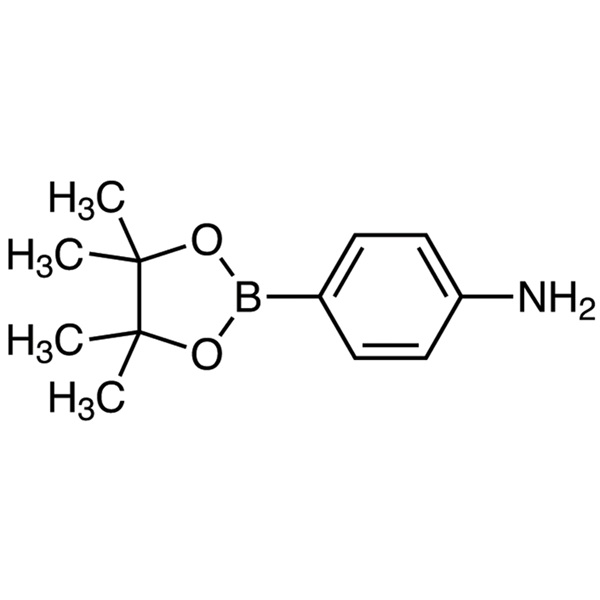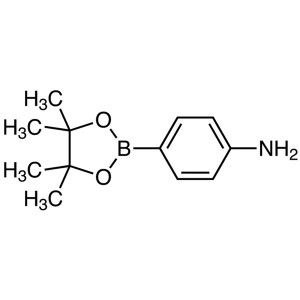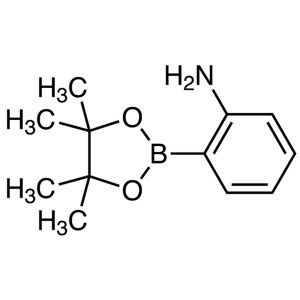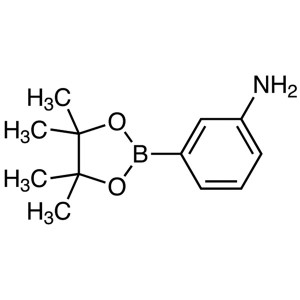4-Aminophenylboronic Acid Pinacol Ester CAS 214360-73-3 Purity >99.0% (GC) Factory High Quality
Manufacturer Supply With High Quality, Commercial Production
Name: 4-Aminophenylboronic Acid Pinacol Ester CAS: 214360-73-3
| Chemical Name | 4-Aminophenylboronic Acid Pinacol Ester |
| Synonyms | 4-(4,4,5,5-Tetramethyl-1,3,2-dioxaborolan-2-yl)aniline; 2-(4-Aminophenyl)-4,4,5,5-tetramethyl-1,3,2-dioxaborolane |
| CAS Number | 214360-73-3 |
| CAT Number | RF-PI1274 |
| Stock Status | In Stock, Production Scale Up to Tons |
| Molecular Formula | C12H18BNO2 |
| Molecular Weight | 219.09 |
| Solubility in Hot Methanol | Almost Transparency |
| Solubility in Water | Insoluble in Water |
| Brand | Ruifu Chemical |
| Item | Specifications |
| Appearance | Yellow to Reddish-Brown Solid |
| Purity / Analysis Method | >99.0% (GC) |
| Melting Point | 166.0~170.0℃ |
| Water (by Karl Fischer) | <0.30% |
| Total Impurities | <1.00% |
| Test Standard | Enterprise Standard |
| Usage | Pharmaceutical Intermediates |
Package: Bottle, Aluminium foil bag, 25kg/Cardboard Drum, or according to customer's requirement.
Storage Condition: Store in sealed containers at cool and dry place; Protect from light and moisture.


4-Aminophenylboronic Acid Pinacol Ester (CAS: 214360-73-3) is used as an intermediate in organic synthesis and pharmaceutical industry and LED materials. It can be used as a reagent for Suzuki-Miyaura Cross Coupling Reaction. Aryl boric acid can be widely used as a safe and environmentally friendly new aryl reagent in pharmaceuticals, pesticides, advanced materials and other fine chemicas containing aryl structure of research and production. The reaction between arylboric acid and halogenate plays an important role in today's drug synthesis. This kind of reaction was first proposed by the Suzuki team, a Japanese scientist, and won the Nobel Prize in Chemistry in 2010.




